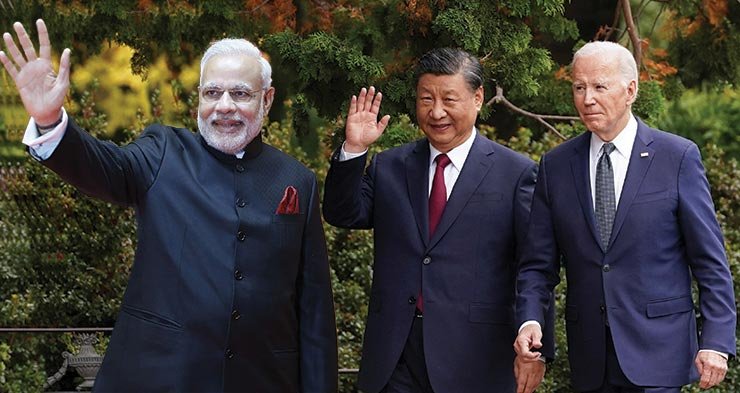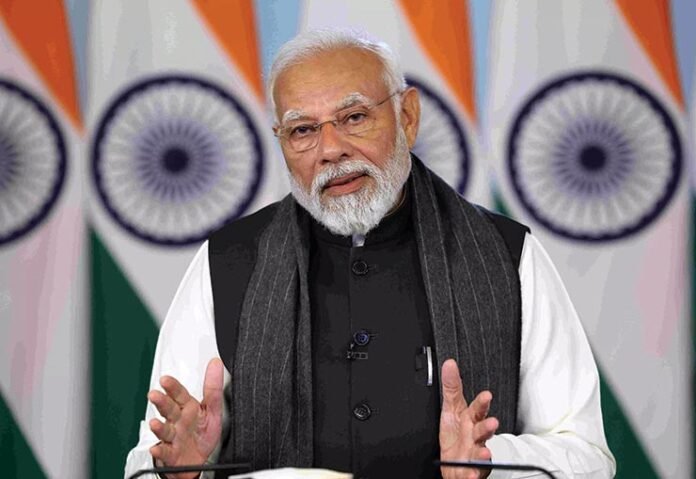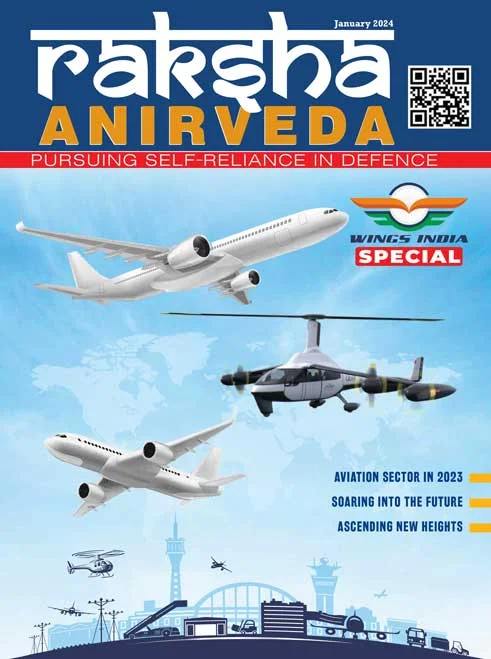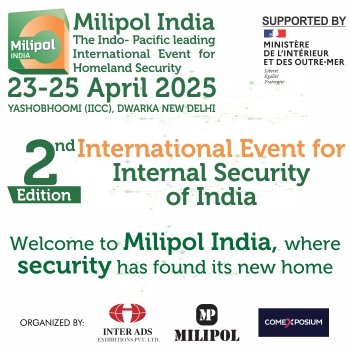India’s foreign policy under Prime Minister Narendra Modi has transformed significantly since he assumed office in 2014. With his electoral victories in 2019 and again in 2024, Modi’s leadership has marked a dynamic shift in how India engages with the world. Modi 3.0, the current term, brings continuity to India’s foreign policy but also faces challenges, underlining the strategic importance of international relations in the administration’s broader vision. After taking the oath, Prime Minister Modi stated, “This coalition government would aim to bring massive changes in the country, introduce governance by consensus, and steer the people towards ‘Viksit Bharat’ by 2047.” Although the foreign policy situation of India is quite peculiar at the moment, India’s primary focus is economic emancipation. India possesses the world’s fifth-largest GDP and is currIndia’s foreign policy under Prime Minister Narendra Modi has transformed significantly since he assumed office in 2014. With his electoral victories in 2019 and again in 2024, Modi’s leadership has marked India’s foreign policy under Prime Minister Narendra Modi has transformed significantly since he assumed office in 2014. With his electoral victories in 2019 and again in 2024, Modi’s leadership has marked ently the fastest-growing major economy.
Historically, India’s foreign policy has evolved through various phases, influenced by its colonial past, non-aligned stance during the Cold War and the liberalisation of its economy in the 1990s. Modi’s tenure built upon these foundations and introduced distinct shifts in strategic priorities and diplomatic initiatives. Modi 1.0 was characterised by a proactive approach towards enhancing India’s global footprint, while Modi 2.0 continued to expand on these initiatives with a focus on economic diplomacy and strategic partnerships. As Modi 3.0 unfolds, it is essential to understand the strategic goals and vision guiding India’s foreign policy.
Key Features of indian Foreign Policy
Under Modi 3.0, several key foreign policy initiatives have taken centre stage. The ‘Neighbourhood First Policy’ emphasises strengthening ties with neighbouring South Asian Association for Regional Cooperation (SAARC) countries. This policy aims to foster regional stability and economic integration by addressing shared security concerns, promoting cross-border trade, and enhancing connectivity. Initiatives such as the Bay of Bengal Initiative for Multi-Sectoral Technical and Economic Cooperation (BIMSTEC) have gained momentum, reflecting India’s commitment to regional collaboration. The ‘Act East Policy’, a continuation and expansion of the earlier ‘Look East Policy’, aims to bolster relations with Southeast Asian nations. This policy underscores the importance of ASEAN countries in India’s strategic calculus, focusing on economic partnerships, maritime security, and cultural exchanges. Modi 3.0 has intensified efforts to engage with East Asian economies through trade agreements, infrastructure projects, and defence collaborations, solidifying India’s presence in the Indo-Pacific region.
In parallel, the ‘Look West Policy’ seeks to enhance ties with Middle Eastern countries. This policy addresses critical areas such as energy security, trade, and the welfare of the Indian diaspora. Strengthening relations with Gulf Cooperation Council (GCC) countries has been a priority, with Modi’s administration actively engaging in high-level visits and bilateral agreements. The Middle East’s significance in India’s foreign policy is underscored by its role as a major source of oil and gas imports and a destination for Indian migrant workers.
Under Modi 3.0, several key foreign policy initiatives have taken centre stage. The ‘Neighbourhood First Policy’ emphasises strengthening ties with neighbouring SAARC countries. Initiatives such as the BIMSTEC have gained momentum, reflecting India’s commitment to regional collaboration
India’s Diplomacy and the World
Major diplomatic engagements under Modi 3.0 highlight India’s efforts to balance relations with global powers. Bilateral ties with the United States have grown substantially, characterised by strategic dialogues, defence cooperation, and economic partnerships. The US-India relationship has been bolstered by shared democratic values and mutual interests in countering terrorism and ensuring regional security. Relations with Russia continue to be robust, with defence and energy cooperation remaining key pillars. Despite occasional geopolitical differences, India’s engagement with Russia is driven by historical ties and strategic necessity.
India’s approach to China, however, has been more complex. While economic ties remain significant, border disputes and strategic competition in the Indo-Pacific region have posed challenges. Modi 3.0 has adopted a cautious yet firm stance, emphasising the need for peaceful resolution of disputes while strengthening India’s defence capabilities. Relations with the European Union have also seen positive developments, with increased cooperation in trade, climate change, and technology.
Multilateral engagements have been a cornerstone of Modi’s foreign policy. India’s active participation in the United Nations, G20, BRICS, and the Shanghai Cooperation Organisation (SCO) underscores its commitment to multilateralism. Through these platforms, India has advocated for global issues such as climate change, sustainable development, and counter-terrorism. Modi 3.0 aims to enhance India’s role in global governance, reflecting its aspirations for a more significant voice in international affairs.
Economic diplomacy has been a crucial aspect of India’s foreign policy under Modi 3.0. Trade agreements and economic partnerships have been pursued to boost exports, attract foreign direct investment (FDI), and promote initiatives like Make in India. The administration’s focus on economic growth is evident in its efforts to negotiate free trade agreements (FTAs) with key economies and participate in regional economic forums. Investment opportunities in infrastructure, technology, and renewable energy are being actively promoted to position India as an attractive destination for global investors.

India’s Defence and Security
India’s defence sector, the world’s fourth-largest armed forces, is on the verge of a major upheaval. The government has identified defence and aerospace as critical areas under the ‘Aatmanirbhar Bharat’ (Self-Reliant India) plan, prioritising the development of indigenous manufacturing capabilities supported by a strong Research and Development (R&D) environment. The Union Budget for 2023-24 has boosted funds for defence services modernisation and infrastructure development to Rs 1.62 lakh crore; a 57 per cent rise since 2019-20. The industry has been allocated Rs 5.94 lakh crore in the same budget, representing a considerable 13 per cent increase over the previous year. India is widely recognised as one of the most significant importers of weaponry. To strengthen the domestic defence sector, the government intends to create openness, predictability, and ease of doing business through a strong ecosystem and supportive regulations. The Department of Military Affairs (DMA) has produced 310 items of services, and two ‘Positive Indigenisation Lists’ of 2958 items under Defence Public Sector Undertakings (DPSUs), out of which 411 military products are to be procured from domestic sources. India’s defence and security strategy under Modi 3.0 has seen significant advancements. Modernisation of defence forces, acquisition of advanced military technology, and strengthening of strategic alliances are key priorities. Counter-terrorism measures, cybersecurity initiatives, and intelligence sharing with international partners have been intensified to address evolving security threats. Military exercises and defence collaborations with countries such as the US, Russia, France, and Israel reflect India’s commitment to enhancing its defence capabilities.
India’s soft power and cultural diplomacy play a vital role in India’s foreign policy strategy. Promoting Indian culture and heritage globally has enhanced India’s image on the world stage. The Indian diaspora serves as a significant asset in foreign policy. Modi 3.0 continues to leverage soft power to build positive perceptions of India and strengthen diplomatic relationships
Way Forward
India’s soft power and cultural diplomacy also play a vital role in India’s foreign policy strategy. Promoting Indian culture and heritage globally through initiatives such as International Yoga Day and cultural festivals has enhanced India’s image on the world stage. The Indian diaspora, one of the largest in the world, serves as a significant asset in foreign policy, fostering cultural and economic ties with host countries. Modi 3.0 continues to leverage soft power to build positive perceptions of India and strengthen diplomatic relationships.
Despite the progress, India’s foreign policy under Modi 3.0 faces several challenges and criticisms. Balancing relations with competing global powers such as the US and China requires careful navigation. Regional conflicts, particularly with Pakistan, and border disputes with China remain contentious issues. Critics argue that some foreign policy decisions, such as the abrogation of Article 370 in Jammu and Kashmir, have led to diplomatic tensions and terrorist activities actively taking place in Jammu and Kashmir (UT), since the oath of Modi 3.0, leading a careful navigation once again. Addressing these challenges requires a nuanced approach that balances strategic interests with diplomatic sensitivity.
Looking ahead, the future prospects of India’s foreign policy under Modi 3.0 are shaped by a long-term vision for its global role. As the world undergoes significant geopolitical shifts, India aims to position itself as a leading global player. Potential areas for new diplomatic initiatives include deepening ties with Africa and Latin America, expanding engagement in emerging technologies, and advocating for reforms in global governance institutions. Modi 3.0’s foreign policy will likely continue to evolve in response to global developments, with an emphasis on strategic autonomy and multipolarity. The administration’s efforts to enhance regional cooperation, strengthen bilateral ties, and participate actively in multilateral forums reflect India’s aspirations for a more prominent role on the global stage. As Modi 3.0 progresses, the impact of these policies on India’s global standing will be closely watched, shaping the country’s trajectory in the years to come.
–The writer is a Special Advisor for South Asia at the Parley Policy Initiative, Republic of Korea. He has authored and edited six books and has various research interests covering Sino-Indian border issues, transboundary rivers, water security, defence, and Indo-Pacific studies. He tweets @The_China_Chap. The views expressed are of the writer and do not necessarily reflect the views of Raksha Anirveda
–The writer is a Special Advisor for South Asia at the Parley Policy Initiative, Republic of Korea. He regularly provides commentary on India-China border issues, water security, and transboundary river challenges in South Asia. You can follow his updates on X at @The_China_Chap. The views expressed are of the writer and do not necessarily reflect the views of Raksha Anirveda










